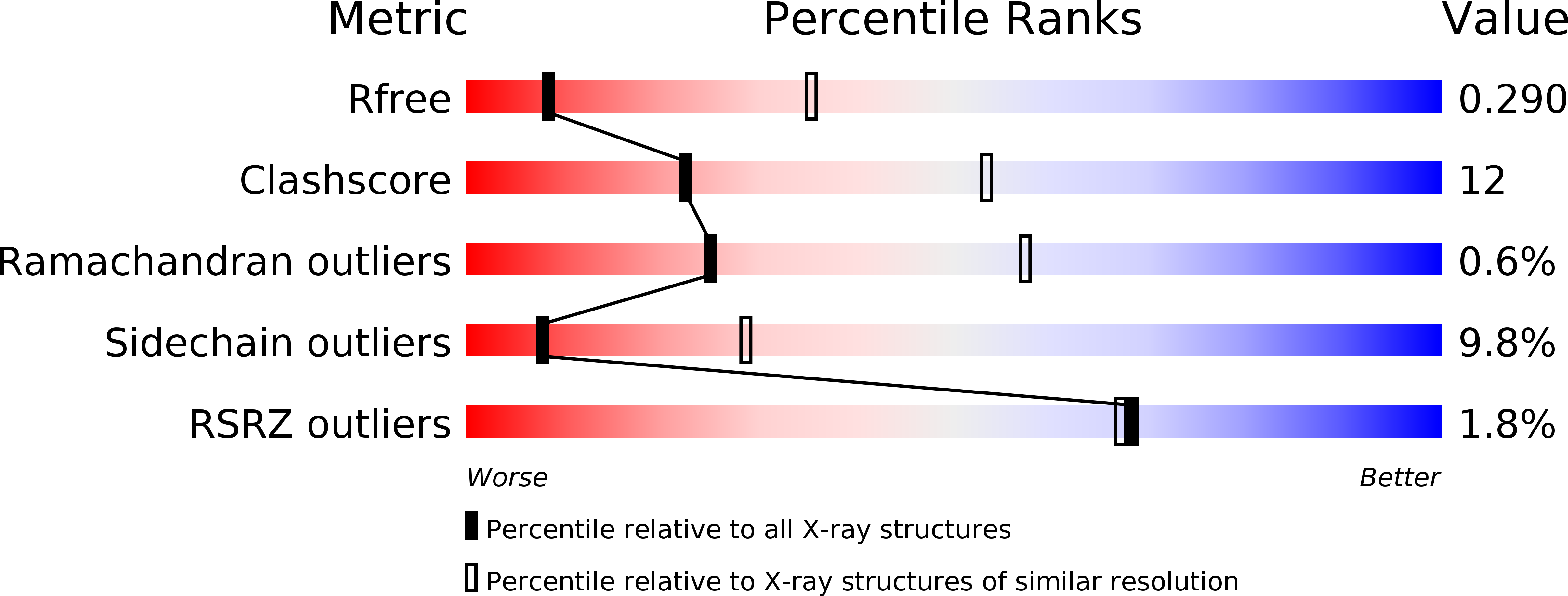A Flexible Interface between DNA Ligase and PCNA Supports Conformational Switching and Efficient Ligation of DNA.
Pascal, J.M., Tsodikov, O.V., Hura, G.L., Song, W., Cotner, E.A., Classen, S., Tomkinson, A.E., Tainer, J.A., Ellenberger, T.(2006) Mol Cell 24: 279-291
- PubMed: 17052461
- DOI: https://doi.org/10.1016/j.molcel.2006.08.015
- Primary Citation of Related Structures:
2HII, 2HIK, 2HIV, 2HIX - PubMed Abstract:
DNA sliding clamps encircle DNA and provide binding sites for many DNA-processing enzymes. However, it is largely unknown how sliding clamps like proliferating cell nuclear antigen (PCNA) coordinate multistep DNA transactions. We have determined structures of Sulfolobus solfataricus DNA ligase and heterotrimeric PCNA separately by X-ray diffraction and in complex by small-angle X-ray scattering (SAXS). Three distinct PCNA subunits assemble into a protein ring resembling the homotrimeric PCNA of humans but with three unique protein-binding sites. In the absence of nicked DNA, the Sulfolobus solfataricus DNA ligase has an open, extended conformation. When complexed with heterotrimeric PCNA, the DNA ligase binds to the PCNA3 subunit and ligase retains an open, extended conformation. A closed, ring-shaped conformation of ligase catalyzes a DNA end-joining reaction that is strongly stimulated by PCNA. This open-to-closed switch in the conformation of DNA ligase is accommodated by a malleable interface with PCNA that serves as an efficient platform for DNA ligation.
Organizational Affiliation:
Department of Biological Chemistry and Molecular Pharmacology, Harvard Medical School, Boston, Massachusetts 02115, USA.























